Spinning Your Wheels: Here's Why Dyno Results Are Incomplete and Useless

The release of the Civic Type R has created a lot of buzz. The recent media launch generated plenty of opinions as to its performance, including some reviewers who believe Honda has underrated the CTR in the same manner it has done with the Accord V6 in the past.
Their speculation seemed to be proven true as a video released from a shop in Puerto Rico showed the car making 301 wheel horsepower. Many outlets reported on the dyno test and, while some showed the data with a little skepticism thrown in, others went all in and told us that the CTR has hidden horsepower.
The real truth behind the dyno test is that it is valueless. We do not have any data on its calibration or the weather, and the dyno operator could have applied any correction factor on the data to boost the results. This is not an isolated case in reporting sketchy dyno results, as I see it multiple times per month from various outlets and, in just about every case, the data and reporting are meaningless.
We can start with the recent CTR test as an example. It was performed on a DynoJet dynamometer by a shop called DynoCenter in Puerto Rico. Their results show one of the tested cars outputting 295 wheel horsepower while another put down 301 wheel horsepower. These numbers are terribly close to the 306 horsepower as rated by Honda, which would mean the car is either underrated or has very little drivetrain loss.
A general rule of thumb many use is to estimate about 15 percent drivertrain loss for a front-wheel-drive car, which would mean the CTR should be showing about 260 wheel horsepower. So is the CTR underrated from the factory or are there some shenanigans going on? The answer is probably both. However, these tests results don’t help us get there.
Aftermarket chassis dynos are built differently than the factory dyno cells used to test engines and come in a few different flavors. Most DynoJet dynos I have encountered are inertia-style units which have a set of rollers that are fixed weight so that simple physics can be used to make a calculation. The dyno software boils down to using the formula of (Mass x Acceleration = Force) in order to calculate the result since the mass of the rollers is a known value and the acceleration can be measured by how quickly the rollers turn. That force result is then dropped into another equation which takes the distance the rollers ran and divides it by the time it took in order to get a horsepower figure. We’ll keep it simple for the purpose of our story, but MotoIQ has great deep dive showing the math behind the results here.
We now have a horsepower result which can be useful if we’re using the dyno as a tuning tool but there are many obstacles in the way that prevent us from using it to compare to an engine dyno result. The first is that the rollers on this type of dyno spin without any load; turbocharged cars that need load in order to build boost properly will show an inaccurate result. Secondly, the results change depending on elevation, temperature, and humidity, so a car tested in Bayamón, PR at an elevation of 52 feet will have wildly different results from a car tested in Denver at an elevation of 5,280 feet.
Some of these factors can be corrected for. The load issue can be resolved by using a dyno that employs an Eddy Current power absorption unit to add additional load to the rollers in order to more accurately model street driving conditions and properly load up turbocharged cars. DynoJet offers an absorption unit on models in their LC range and many others, like those made by Mustang, always come with one.
Once the load issue is (somewhat) resolved, we can focus on correcting for weather and altitude in order to calibrate the results between two different locations. There are multiple methods of correcting for these factors, ranging from preset formulas as calculated and published by the Society of Automotive Engineers all the way to some guy entering a preset multiplier based on what he thinks is best. The original formula that was released is called STD and, although it is based on the J607 standard released in 1974, some shops — including DynoCenter above — continue to use it.
STD uses a standard set of conditions for temperature, elevation, and humidity, then applies a formula to modify the uncorrected dyno result based on the difference in each. This is a somewhat stable correction factor if used exclusively to compare a single car before and after a change in tune or if used to compare cars side by side, but a more accurate correction factor called SAE was released in 1991 and updated in 2004.
SAE is based on the J1394 standard which offer a few advantages over the older STD standard. It uses a more realistic set of standards for weather and altitude which work better for correction and it also uses a mechanical efficiency modifier that assumes an 85 percent mechanical efficiency at the wheels (like we discussed above). While these changes may make it seem like using the SAE correction factor would yield the higher horsepower figure, the result is actually the opposite — with SAE reading about 4 percent lower on average when compared to STD. This means a Civic Type R showing 301 wheel horsepower using the STD correction would likely come down to around 289 horsepower if the SAE correction was used.
The third method of correcting values involves doing a manual correction factor and, unfortunately, it is still common in many shops. The biggest driving force for using this type of correction factor appears to be online bench racers who want to have the highest final figure. While using a manual correction factor won’t affecting how a car is tuned as long as the same one is used in the beginning and the end, it will affect the final value. Many shops start with STD and then decided to create their own mechanical efficiency modifier through a 1.15 correction factor. In those cases, the uncorrected value is always multiplied by 1.15 to create the final “corrected” results, which could mean that a car showing an uncorrected value of 262 wheel horsepower could jump to showing a “corrected” value of 301 horsepower once this manual correction factor is applied.
Just looking at these factors, we can see there many opportunities for inaccuracy — and this is just the first layer. Naturally aspirated cars can be equalized using formulas to some point, but when we get to forced induction, several other factors come into play. Modern engine management systems are very sensitive to temperature changes, fuel type, and other factors. The systems will modify fueling and, in turn, power in order to make a car perform optimally. Since these fueling changes are being made on the fly, even small things like whether a hood is open or closed on the dyno will affect the final results. The intercoolers for these turbochargers also require proper airflow, so something like my WRX would technically need a duct mounted fan going directly into the hood scoop with some type of PWM control in order to simulate airflow at each speed.
There’s plenty more nerding out that can be done when talking about how dynos work, though the point here is that almost none of these results are comparable and there isn’t any value in using them as the basis of a story. The Civic Type R might be slightly underrated, but probably does not make 40 more horsepower than it was rated for — and that Dodge Viper that was tested on a dyno in New Jersey probably did not gain power over the years. None of these figures can be accurately compared since we do not have the rest of the data used and don’t know how the car was set up when placed on the dyno.
Because test results are exciting and awake the bench racer inside all of us, writing about them is always tempting. However, since the factors mentioned above are almost never available, it is hard to do it accurately. There is one other method that can legitimize a dyno result, something I’ve only seen once in a recent story by David Tracy at Jalopnik. That is, to use other cars that have run on the same dyno under similar conditions. While this type of reporting does not require much additional effort, it at least allows us to create a scale, based on the results of several vehicles, that shows how cars are performing compared to their factory test results.
[Image: Honda]

More by Bozi Tatarevic
Latest Car Reviews
Read moreLatest Product Reviews
Read moreRecent Comments
- Orange260z I'm facing the "tire aging out" issue as well - the Conti ECS on my 911 have 2017 date codes but have lots (likely >70%) tread remaining. The tires have spent quite little time in the sun, as the car has become a garage queen and has likely had ~10K kms put on in the last 5 years. I did notice that they were getting harder last year, as the car pushes more in corners and the back end breaks loose under heavy acceleration. I'll have to do a careful inspection for cracks when I get the car out for the summer in the coming weeks.
- VoGhost Interesting comments. Back in reality, AV is already here, and the experience to date has been that AV is far safer than most drivers. But I guess your "news" didn't tell you that, for some reason.
- Doc423 Come try to take it, Pal. Environmental Whacko.
- 28-Cars-Later Mazda despite attractive styling has resale issues - 'Yota is always the answer.
- 28-Cars-Later Try again.
















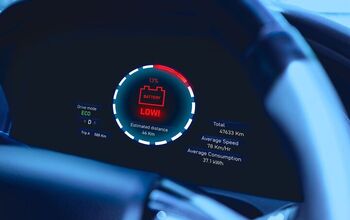


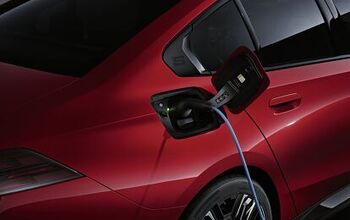

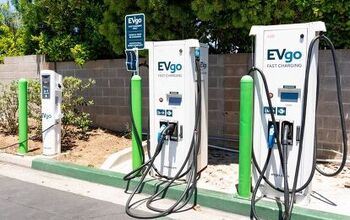
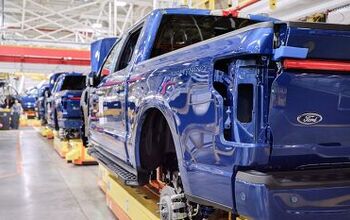






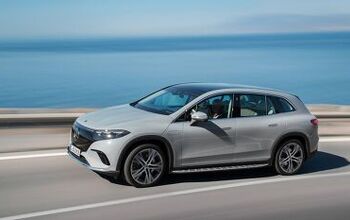




Comments
Join the conversation
>>including some reviewers who believe Honda has underrated the CTR in the same manner it has done with the Accord V6 in the past.
Somebody got their paper racing heart broken by a dyno and wrote an article to poo poo on dynos.... lol My mildly modified F150 ecoboost dyno's at 366hp and 484ft/lbs tq.